Watch the African American History Museum Became a Giant Movie Screen
With state-of-the-art projection imagerie, acclaimed filmmaker Stanley J. Nelson’s 3D video transformed the museum for three nights in November
The building of the National Museum of African American History and Culture is now complete with interior work underway. Now marks the final countdown to the museum’s grand opening next Fall (exact dates have not yet been announced). Though an actual visit to the long-awaited museum is still many weeks away, visitors to the National Mall next month will get a taste of what’s to come when the museum’s façade will be transformed into a lively and spectacular display of video, music and light.
When the sun went down each evening between November 16 and 18, the museum’s south exterior, facing Madison Drive, and its west exterior, on 15th Street near the Washington Monument, was illuminated by a seven-minute video, entitled “Commemorate and Celebrate Freedom.” Produced by the renowned filmmakers Stanley J. Nelson and Marcia Smith of Firelight Media, and animated by Quixotic Entertainment, the video projection transformed the museum into a five-story, block-long 3D canvas.
“What we wanted to do was to metaphorically have the museum speak even before we open next year,” says Kinshasha Holman Conwill, deputy director of the museum.
“And the signal design element for our building is the corona: the three-tiered bronze colored element that has references in African sculpture and African American life and that identifies this building as something unique on the Mall. So to project on to that façade really gave us that opportunity to make the museum speak.”
The display, which the museum's director Lonnie Bunch has called a "dynamic event," was accompanied by a soundtrack of historical music and spoken word, and paid tribute to three significant moments in history: the culmination of the Civil War with the surrender at Appomattox on April 8, 1865; ratification of the 13th Amendment, which officially ended the institution of slavery on December 5, 1865; and the passage of the Voting Rights Act on August 6, 1965.
“One of the things that [the film connects] to is the notion and the vision that the museum would be a place for those who already revel in African American history and culture,” says Conwill. “But most importantly," she adds that the museum seeks to also provide a unique "lens into what it means to be an American and that those milestones in American history, as viewed through that lens, really amplifies that notion.”
On its opening night, November 16, the state-of-the-art digital projection imagery was also accompanied by a live, outdoor program, produced and directed by Ricardo Khan, former artistic director of the Tony Award-winning Crossroads Theatre Co. Actor Erik Todd Dellums served as master of the ceremonies, which included remarks by other dignitaries, including Washington D.C. Mayor Muriel Bowser; and U.S. Representative Eleanor Holmes Norton.
Grammy award-winning R&B and gospel singer BeBe Winans; pianist, composer and conductor Darin Atwater and his 55-member Soulful Symphony; and the Heritage Signature Chorale directed by Stanley J. Thurston performed. And historical figures from the eras highlighted in the video, such as civil rights activist Ella Baker and abolitionist Frederick Douglass, were recalled through readings of their significant works.
Conwill hopes that visitors that night will be inspired and engaged by the story they saw in this display and program, and reminded of the purpose of this latest addition to the Mall.
“It will make people think," she says "about those fundamental American and African American characteristics and yearnings for freedom for justice, for equality, for a world where everyone is created equal and has the equal opportunity to achieve their dreams.”
/https://tf-cmsv2-smithsonianmag-media.s3.amazonaws.com/accounts/headshot/DSC_0154.JPG.jpeg)


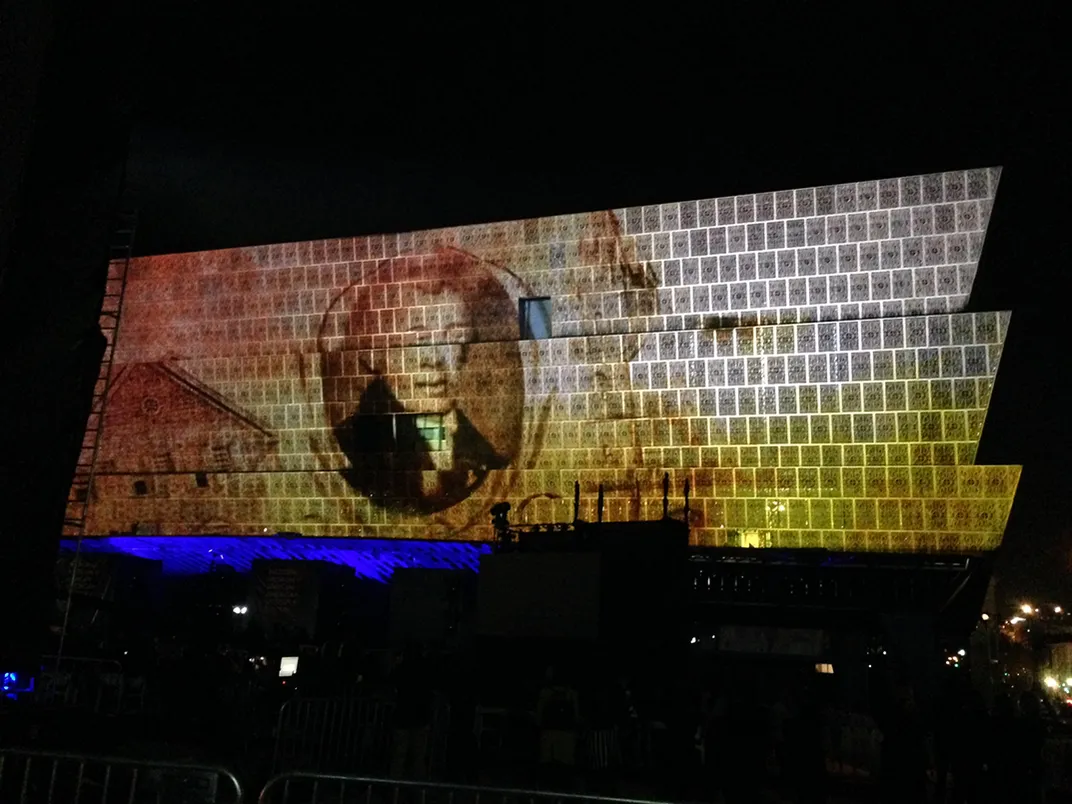
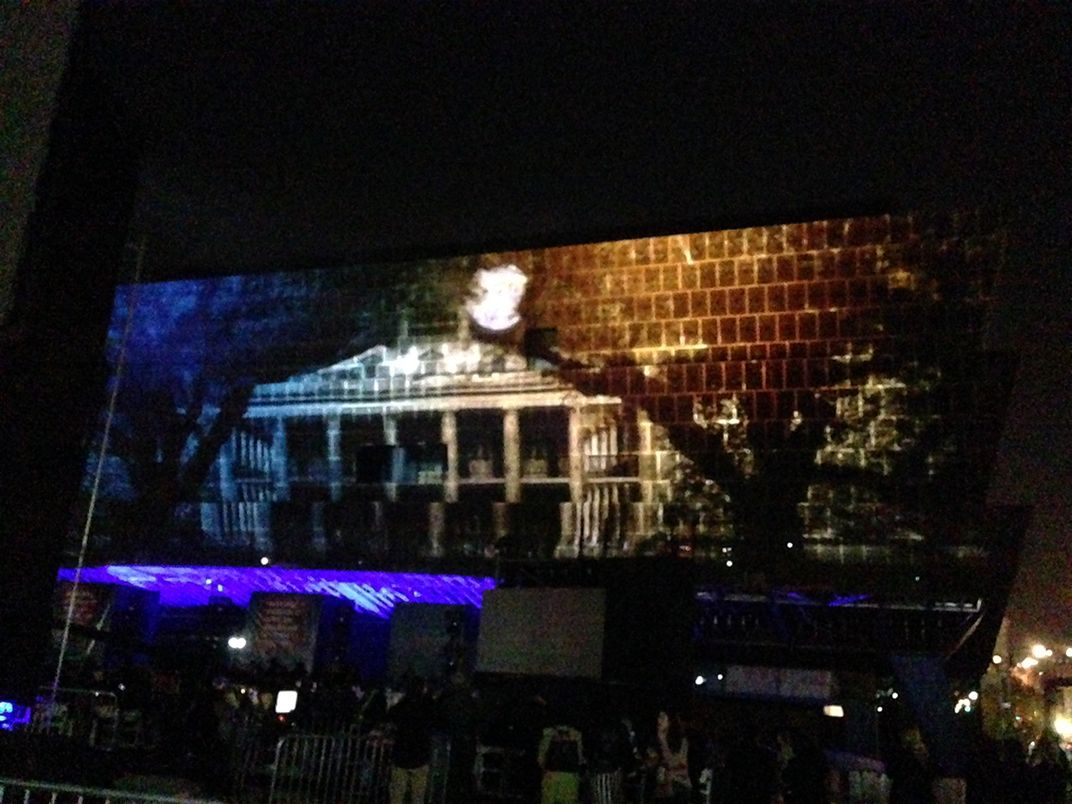
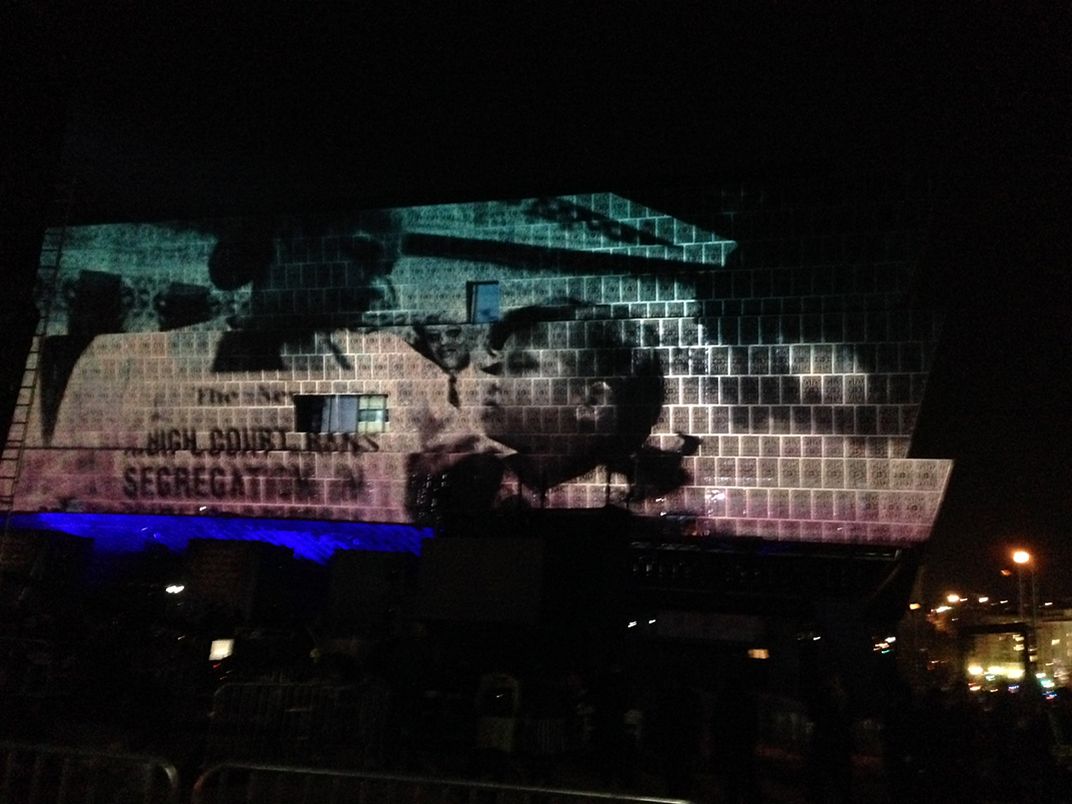
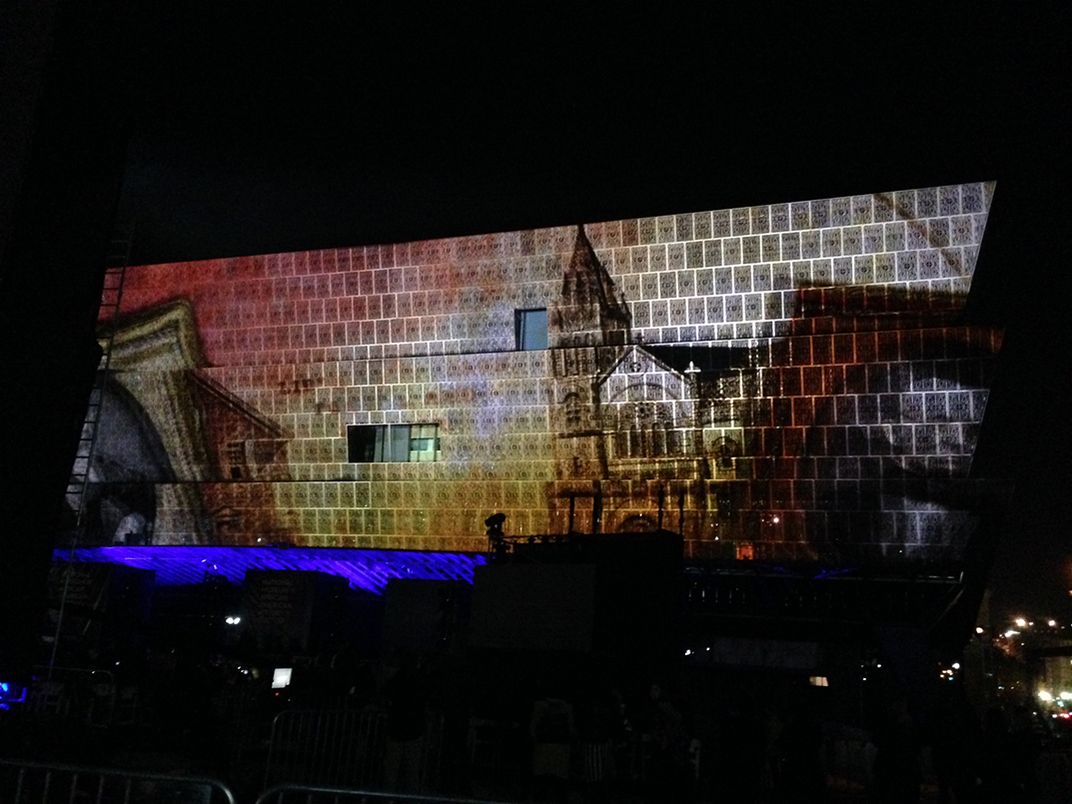
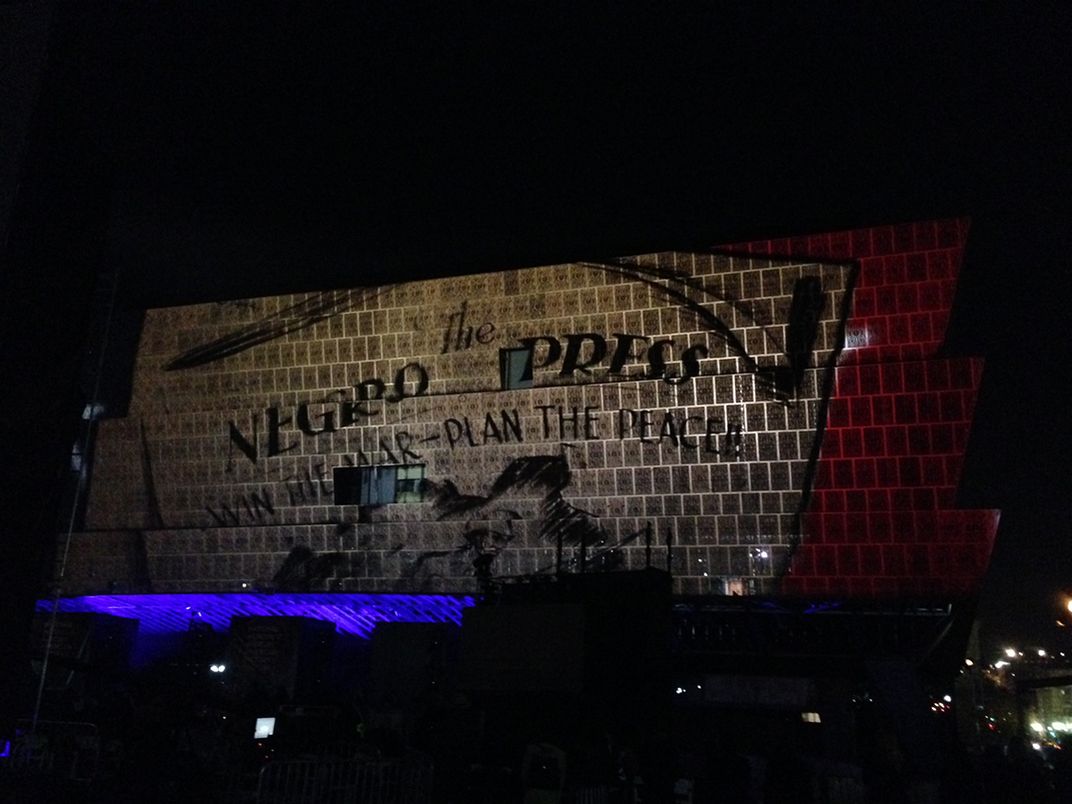
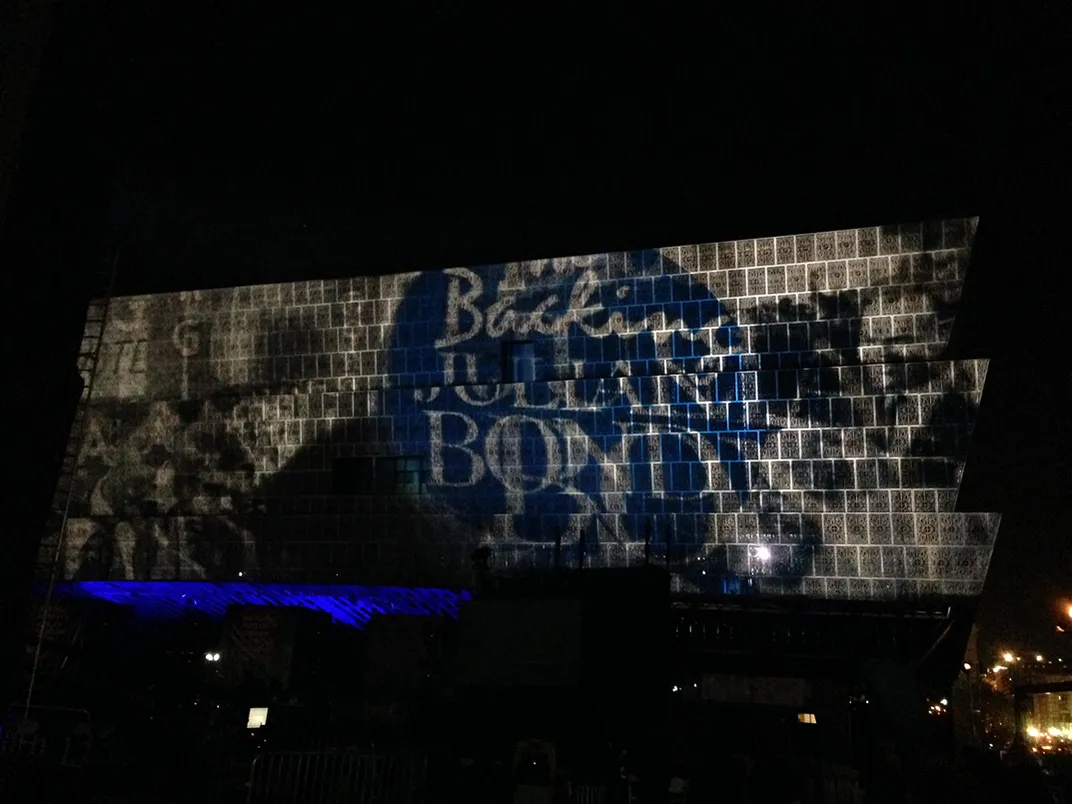
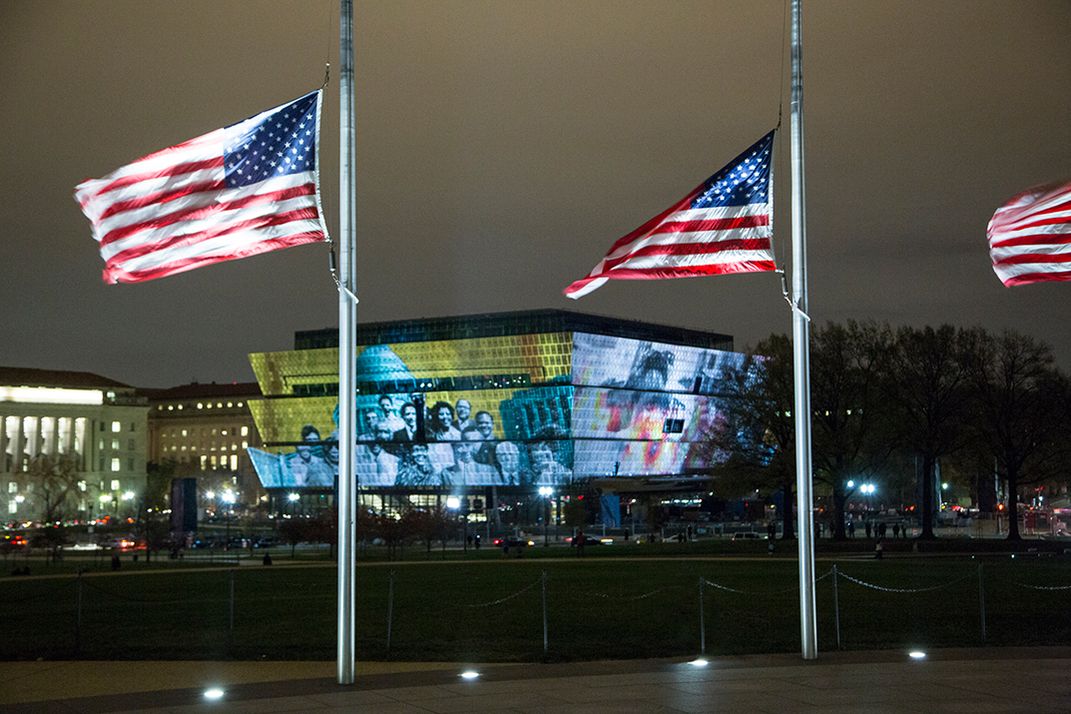
/https://tf-cmsv2-smithsonianmag-media.s3.amazonaws.com/accounts/headshot/DSC_0154.JPG.jpeg)